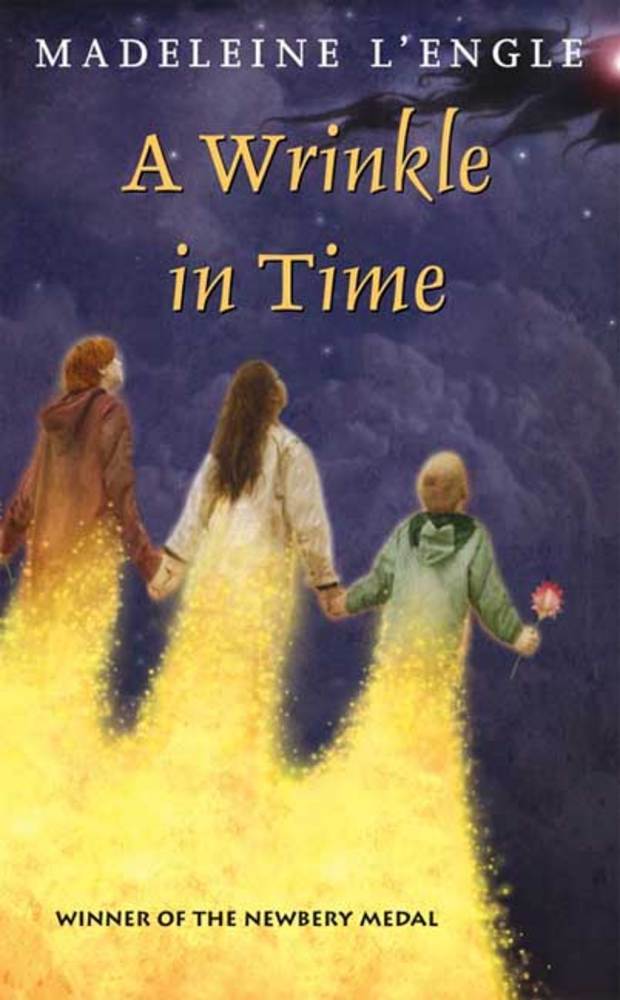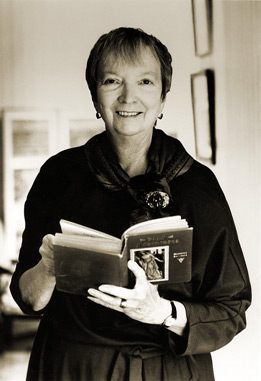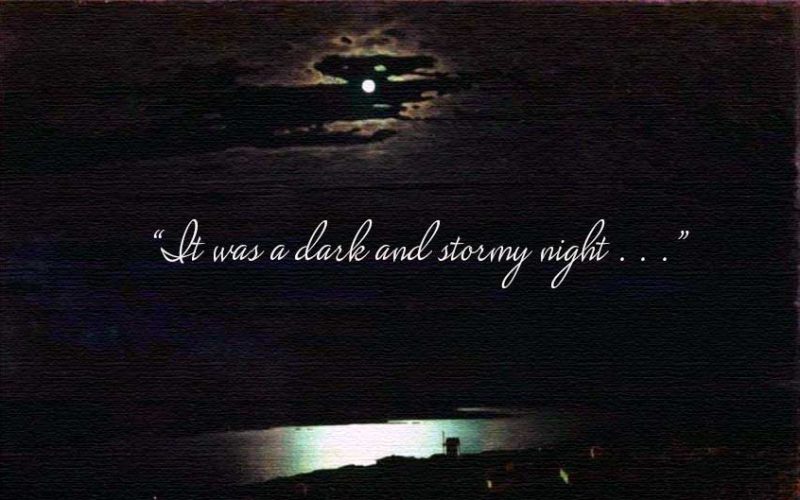You have to write the book that wants to be written…if the book will be too difficult for grown-ups, then you write it for children. —Madeleine L’Engle
In 2016, Amazon US announced that The Hunger Games had outsold Harry Potter as its all-time bestselling series—not just in the young adult category.
Both Hunger and Harry feature teenagers who battle evil and make decisions that affect the lives of others. Katniss Everdeen takes on a murderous system and Harry Potter defeats a deadly sorcerer.
Yet twenty-six publishers rejected one of my generation’s most beloved books because (quoting the author) it “dealt overtly with the problem of evil, and it was really difficult for children, and was it a children’s or an adults’ book, anyhow?”
The idea that teenagers can’t fathom evil or that adults don’t want to read about their struggles seems laughable now. But it has been almost sixty years since A Wrinkle in Time by Madeleine L’Engle (1918-2007) almost wasn’t published.
Madeleine L’Engle’s Early Years and Marriage
From the moment she learned to write, Madeleine entertained herself with stories, poems, and journals. Not surprisingly, her teachers thought her slow because she hated traditional school subjects.
At age 12, her family moved to the Alps because her father, Charles, suffered lung damage during World War I. Her parents, absorbed with Charles’ illness and each other, drove her to a Swiss boarding school one morning, introduced her to the headmistress, and left. Madeleine had no idea what was happening. “I shook hands with the matron, and they vanished.”
But the school encouraged her creativity and gave her confidence. She returned to the States and excelled in high school. “We had a Miss McBee, who was mad about the theatre. The teachers thought I was bright, and I was elected class president. It was extraordinary.” And bittersweet, for her father died in her senior year.
Madeleine went on to Smith College and graduated with honors. She moved to Greenwich Village and pursued acting since she thought it would be an easier way to make money than writing. There she met Hugh Franklin, her future husband, as an understudy in Anton Chekov’s The Cherry Orchard.
Hugh and Madeleine moved to a dairy farm in Connecticut to raise their children. They bought an old general store and revived it. Madeleine gave birth to a daughter and son, Josephine and Bion. Hugh and Madeleine also adopted a little girl, Maria, when her parents—their best friends—died within a year of each other.
During that time, Madeleine never gave up on writing:
I must honestly admit that helping to build up, participate in the life of a small, but very active community, run a large farmhouse and raise three small children is the perfect way not to write a book. I did manage to write at night. Writing is, for me, an essential function, like sleeping and breathing.
Madeleine conceived A Wrinkle In Time in 1959 on a cross-country vacation. She writes that “we drove through a world of deserts and buttes and leafless mountains, wholly new and alien to me. And suddenly into my mind came the names, Mrs Whatsit. Mrs Who. Mrs Which.”

The Story Behind A Wrinkle In Time
A Wrinkle In Time tells the story of Meg Murry, an imaginative and rebellious teenager, whose father goes missing while working on a government project called The Tesseract (akin to a wormhole). Meg, her little brother, and a neighbor must pass through a time tunnel to battle the alien totalitarian regime that has kidnapped their father. Mrs Whatsit and company become their other-worldly guides.
Madeleine completed A Wrinkle in Time in early 1960, at age 42. After those twenty-six rejections, her agent returned the manuscript and Madeleine put it in a drawer.
I received many rejection letters and I used to put the kids to bed and take my dogs and walk them down the long dirt road in front of my house and cry my eyes out. Yet I couldn’t stop writing and I kept on writing. I had no choice. I might never get published, but I had to keep writing.
After a decade in the country, the family returned to New York so Hugh could revive his acting career (he eventually became a well-known soap opera star). Madeleine found a job teaching grade school.
One Christmas, Madeleine threw a tea party for her mother. One of the guests knew publisher John C. Farrar and arranged for Madeleine to meet him. Although his company didn’t accept children’s books at the time, Farrar loved the novel and ultimately published it.
In 1963, A Wrinkle in Time won Newbery Medal, awarded annually by the American Library Association for the most distinguished American children’s book.
 A Wrinkle In Time Was Banned in the 1990s
A Wrinkle In Time Was Banned in the 1990s
A Wrinkle In Time appears in the top-25 Most Banned Books of the 1990s because its magical and scientific elements seemingly challenge Christian precepts. This shocked Madeleine, a devout Episcopalian.
First I felt horror, then anger, and finally I said, “Ah, the hell with it.” It’s great publicity, really.
(I love that bit of ironic profanity.) Madeleine wrote over fifty books in her lifetime, including plays, prayer books, poetry, and nonfiction. Most have overtly spiritual themes.
At age 74, she trekked across Antarctica. The journey resulted in a spiritual memoir titled Penguins and Golden Calves, “a captivating discussion of how opening oneself up to icons, or everyday ‘windows to God,’ leads to the development of a rich and deeply spiritual faith” (from the jacket).
From being an imaginative, misunderstood, sometimes neglected child, Madeleine transformed into a late-blooming author who inspired a whole generation. Writer Anne Lamott spoke for many of us when she wrote:
A Wrinkle in Time saved me because it so captured the grief and sense of isolation I felt as a child. I was 8 years old when it came out, in third grade, and I believed in it—in the plot, the people and the emotional truth of their experience.
Madeleine L’Engle’s journey affirms that, as she put it, “Life is worth living; the adventure is worth taking”—at any age.
Sources
- Madeleine L’Engle’s website
- New York Times Obituary
- New Yorker Profile: Madeleine L’Engle
- Guardian Books: “A Wrinkle in Time, well worth two Newbery medals“
- American Catholic: “Madeleine L’Engle: An Epic in Time“
- Opening Image: Moonlight on the Dnieper by by Arkhip Kuindzhi (1880)
